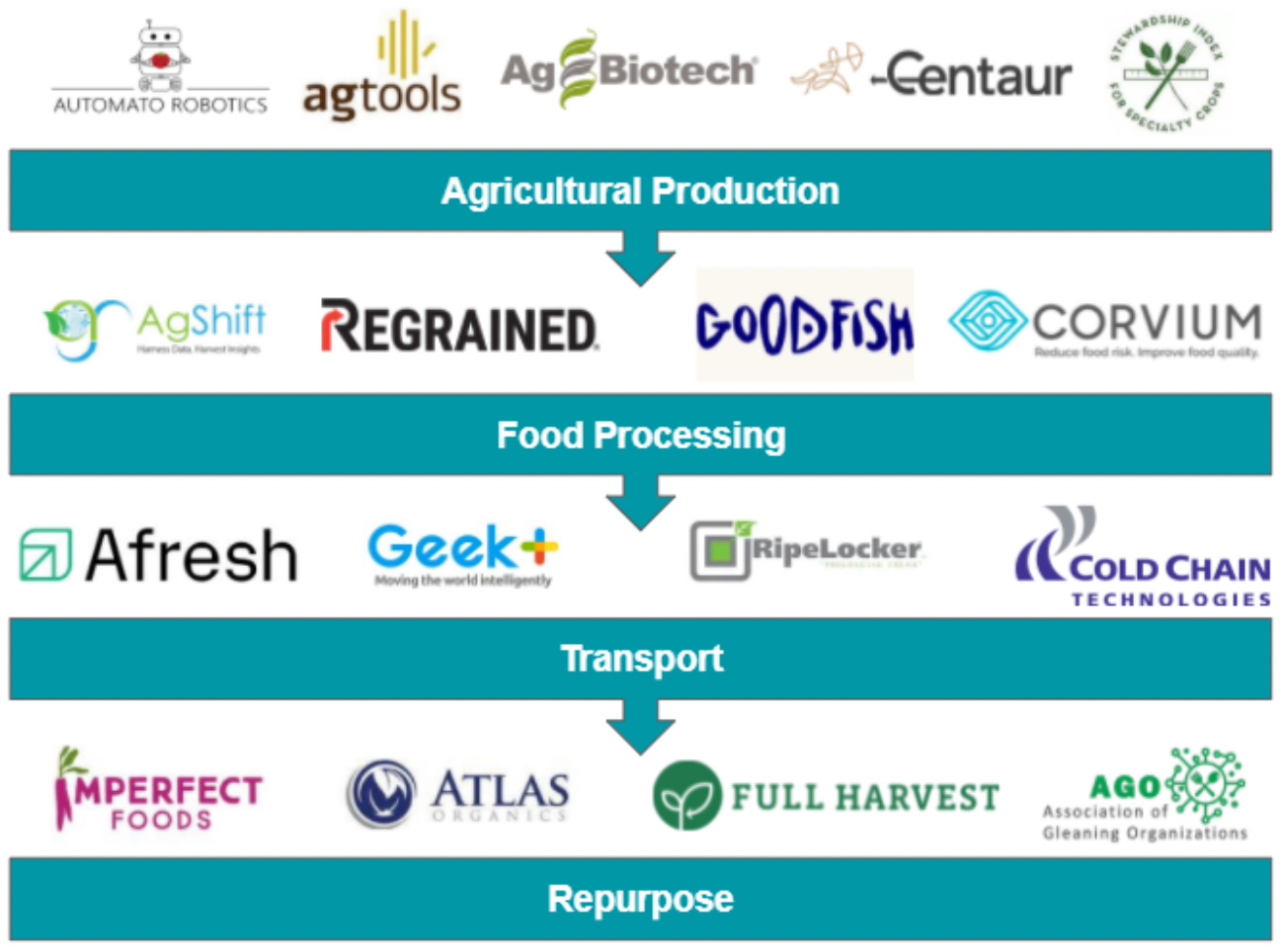Gigaton Potential
Decreasing global food waste by 50% by 2050 could eliminate 90 gigatons of CO2 equivalent (CO2e) emissions cumulatively from 2020-2050 according to Project Drawdown.
For reference: in 2019, the world emitted 51 gigatons of CO2e greenhouse gases. Project Drawdown estimates we need to cumulatively eliminate 1,000 GT from 2020-2050 to keep global warming below 2 degrees Celsius.
You Might Be Interested If...
You are excited to influence and scale macro-level behavioral changes to fight global warming
You like using systems-level thinking to improve efficiencies
You want to be connected to and improve the agricultural practices that sustain life today
You recognize the value of forests and grasslands and want to protect them
Solution Summary
The United Nations Food and Agriculture Organization (FAO) is one of the foremost bodies measuring global food waste and they break it into two pieces: food loss and food waste. From harvest up to, but not including retail, nearly 14% of the world's food production goes unused as food loss. A good example is when farmers discard imperfect produce since it completely exits the food supply chain. Another 17% is unused after households, food service, and retail receive food and FAO labels that as food waste.
When you pair those inefficiencies with population growth and global goals to reduce food waste by half by 2030, food waste will be an increasingly topical discussion in the climate conversation.
Under Project Drawdown's calculations, we can avoid nearly 90 GT of additional carbon emissions through reduced food waste. 14 GT comes from diverting agricultural production instead of wasting it while the remaining 77 GT comes from avoiding deforestation. These totals combine to become Drawdown's largest estimated GHG impact of all solutions to limit global warming below 2 degrees Celsius that they considered in their comprehensive survey of climate change mitigation strategies.
When we reduce food loss and waste, it provides two massive sustainability benefits: reducing sources of GHG emissions (e.g. food in landfills) and, perhaps more uniquely, supporting carbon sinks (e.g. not clearing a forest). Using our current farmland more efficiently will help keep as much CO2 as possible safely stored in the forests and grasslands around the world. When we protect those carbon sinks even as demand for food rises, we give ourselves much needed time to continue climate change mitigation work elsewhere in our economies.
Key Players
Imagine a set of three early-stage companies working within the umbrella of sustainability. One builds a computer operating system for grocery stores (Afresh), the second manufactures shelf-life extending containers (Ripelocker), and the third creates and manages an online marketplace for surplus foods (Full Harvest). While it may not be too hard to guess the common problem they are solving (food waste), it's a bit trickier to understand where they sit in the supply chain from farm to table and what role they play to mitigate emissions.
At the highest level, we segment the food supply chain into four categories when thinking about how to reduce the GHG impact of food waste:
Agricultural production: the physical process of land conversion alongside growing crops and raising livestock
Food processing: turning that initial supply of food into its finished product
Transport: the many stages of packaging, transportation, and retail distribution to get a product to its intended end user
Repurpose: if food is wasted or rejected at any point in the supply chain before now, repeating the stages of processing and/or transport to divert food waste to be used elsewhere
Afresh's approach to inventory management falls under the first stage of food transport. They help grocers reduce food waste and more accurately forecast product demand. Ripelocker is helping reduce waste along both stages of transport by creating containers that extend the shelf life of perishables. And Full Harvest helps enable the second stage of transport by routing customers to surplus or "imperfect" food at the end of the first stage of transport.
Opportunities for Innovation
📏 Measurement
Few governments have robust data on food waste according to the UN Environment Programme (2021). Many restaurant and foodservice companies also lack quantifiable information on where and why waste occurs according to reFED, a US food loss non-profit. A solution bringing high-quality information can be the key to unlocking scalable progress on food waste. Startup Winnow is building AI-enabled tools to automatically track food waste for the foodservice and hospitality industry.
🚛 Logistics
A great deal of the economic and carbon cost of managing food waste comes from the collection and processing of foods across both stages of transport. For companies working to "rescue" imperfect or otherwise wasted food, costs and emissions have to be kept low to maintain impact. New York estimated the average cost for non-manufacturing and service facilities in the state to divert food waste in 2016 was roughly $98/ton. Electrification and automation of heavy transport by companies like Daimler and Tesla can eventually reduce the cost and emission intensity of this service.
💰 Monetization
In some cases even when businesses find food waste to address, the cost of diverting the food is too high and doesn't match the benefits businesses see today. An example of business model innovation comes from Wasteless, a startup helping supermarkets recapture the value of perishable products through pricing that decreases as it gets closer to its best-before date.
Sources
Additional reading material or sources
https://drawdown.org/solutions/reduced-food-waste
https://agfundernews.com/food-waste-landscape-market-map-investing-in-food-waste-solutions.html
https://www.metabolic.nl/publication/global-food-system-an-analysis/
https://www.fao.org/3/ca6030en/ca6030en.pdf
https://www.unep.org/resources/report/unep-food-waste-index-report-2021
https://www.fao.org/3/cb1329en/online/cb1329en.html#chapter-2






Thanks Joseff. It's important to link food waste and GHG. Reducing the former can lower the latter. I think the impact on GHG could be even greater though. One huge source of GHG that isn't mentioned above - nor in the Project Drawdown calcs as far as I can tell - is fugitive methane emissions from landfills. This is a HUGE contributor to GHG, especially given methane's much more potent warming effect. Almost all that methane emanating from landfill (trash dumps) is due to food ending up in garbage.